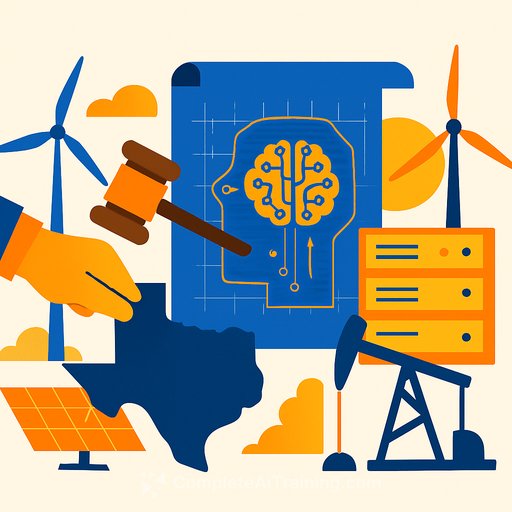States’ Resistance to ESG Finance Offers Lessons for Meeting AI’s Energy Demands
Artificial intelligence is transforming industries and geopolitics, but it’s also becoming one of the most energy-intensive technologies. The growing computational needs of AI models are driving a surge in electricity demand that risks overwhelming already strained power grids.
According to the International Energy Agency, global data centers could more than double their electricity consumption by 2026, surpassing 1,000 terawatt-hours. This increase is fueled by the energy needed not only to run and cool chips but also to train and deploy complex AI models. Meanwhile, utilities across the U.S. warn of capacity shortfalls amid regulatory delays and ambitious climate targets that have slowed new energy projects.
What Happens When National Goals Clash with Local Economic Needs?
The pushback against environmental, social, and governance (ESG) finance at the state level provides a useful case study. ESG investing aimed to promote corporate responsibility but also restricted financing for traditional energy sectors like oil and gas. Some states, led by Texas in 2021, responded by barring public contracts with financial firms that limited support to these industries.
This move pushed major municipal bond underwriters such as JPMorgan and Citigroup out of Texas’s market. Critics predicted this would raise borrowing costs for local governments. However, a recent analysis of bond yields from 2017 to 2024 showed no significant increase in borrowing costs, even for large transactions where underwriting relationships matter most. Oklahoma’s similar policy in 2023 produced comparable results.
Why did this happen? Long-term changes in municipal finance play a role: underwriting fees have decreased, competition has grown, and states with no income tax attract strong investor demand. More importantly, markets adapt when states reject what they see as overreach by firms or rating agencies. New underwriters fill gaps, investors adjust, and the system continues functioning.
AI’s Energy Needs Demand a Similar Recalibration
AI’s growing electricity appetite is forcing a rethink of energy policy. National climate goals often sideline traditional energy sources before alternatives are ready to reliably meet demand. Capital flows heavily into green tech that struggles to scale cost-effectively, risking system reliability.
Training a single advanced AI model can consume several gigawatt-hours—equivalent to powering hundreds of U.S. homes for a year. The ongoing energy costs to run these models at scale could far exceed training expenses. Addressing this requires not only expanding capacity but also investing in energy efficiency and smarter grid management to align supply with shifting demand across regions and time zones.
Bridging the Gap Between Ambition and Implementation
The National Energy Dominance Council, established in 2019, aims to close the gap between national energy goals and local realities. By coordinating states and private stakeholders, it works to speed permitting, identify key transmission corridors, and streamline regulatory hurdles that delay energy projects.
The council’s approach fosters transparent negotiations between utilities and corporate energy buyers, encouraging market-driven investments in renewables while maintaining grid reliability. Instead of imposing rigid mandates, it helps align incentives and clear bottlenecks that have stalled progress.
States Must Take Initiative
States can’t afford to wait passively. Many are already acting to secure energy supplies that meet AI-driven demand and support economic growth. Arkansas is fast-tracking natural gas permits. Georgia is investing in nuclear power and grid upgrades. Texas, despite past grid challenges, leads in wind power generation while expanding natural gas capacity to stabilize supply.
While some worry these efforts may conflict with climate goals, the alternative risks are severe: fragile grids, rolling blackouts, and opaque rationing of AI resources. Reliability and capacity are essential components of a digital economy. Energy neutrality is not a sustainable position.
Key Takeaways for Finance Professionals
- Markets adjust when states push back against broad national or corporate trends that threaten local interests.
- Financial impacts of such pushbacks are often neutral, sometimes even positive, correcting misaligned incentives.
- Energy infrastructure investment must balance decarbonization goals with reliability and capacity needs.
- Understanding the evolving landscape of energy finance is crucial for managing risks tied to AI’s growth.
As AI accelerates demand on energy systems, finance professionals should monitor how state-level policies interact with federal initiatives and market forces. The lessons from ESG finance show that pragmatic state action can influence markets without causing the predicted financial disruptions.
For those interested in expanding their knowledge on AI’s impact on finance and technology, exploring targeted AI training and certification can be valuable. Resources like Complete AI Training offer courses tailored to finance professionals navigating the AI-driven economy.
Your membership also unlocks:






